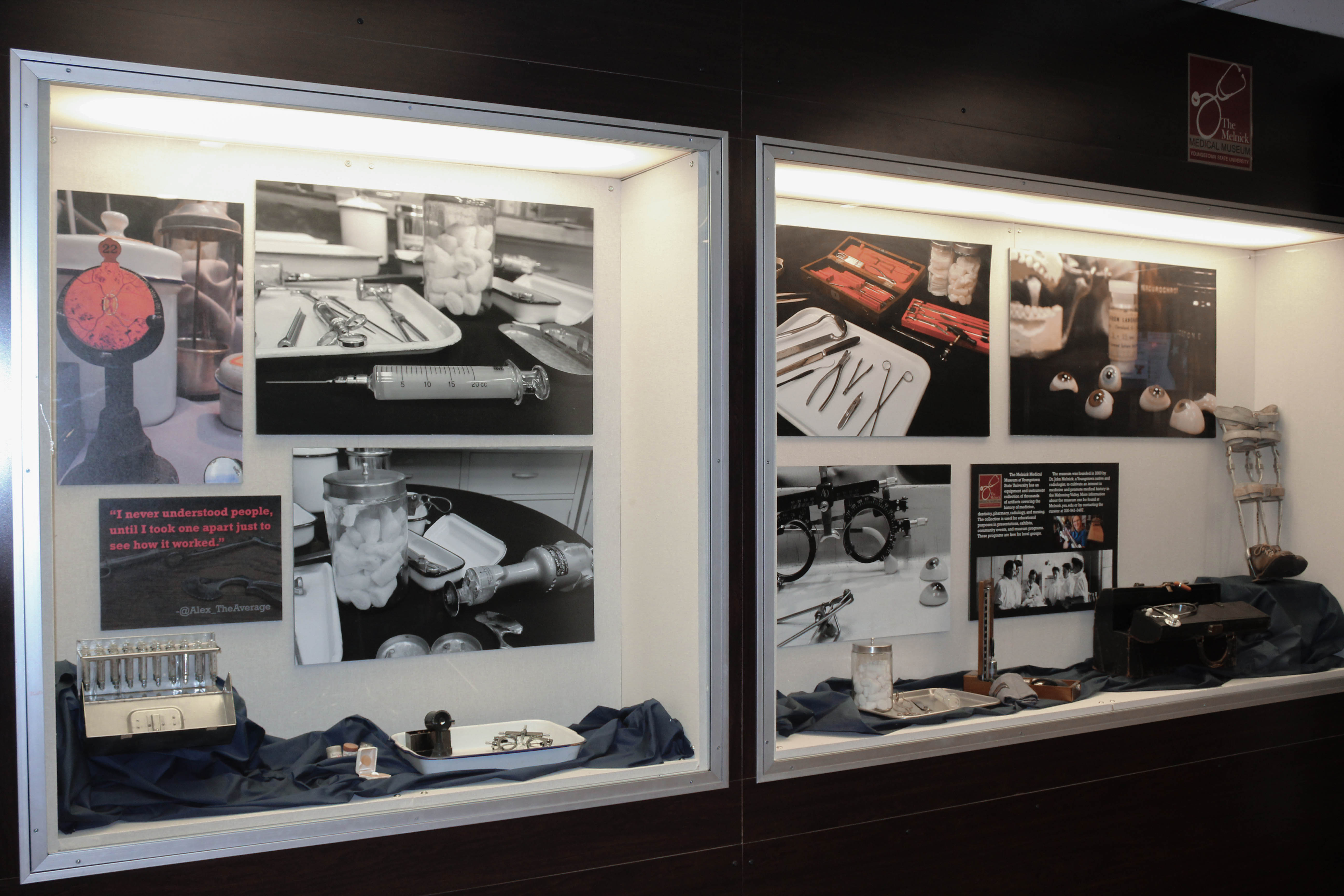By Amanda Joerndt
A Youngstown State University art student got the chance to combine her passion for photography with her interest in the medical “mad scientist aesthetic” by creating a photo exhibit using real-life prosthetic objects.
Ashley Vaughan, a senior interdisciplinary studio art major, was given a photography project in her course work, which sparked an idea like no other.
A book called “Miss Peregrine’s Home for Peculiar Children” prompted Vaughan to analyze what humans leave behind and “the idea of body without ever actually showing body.”
Vaughan said purchasing her own prosthetic objects would have been too expensive, which led her to do research on where to invest in the objects, guiding her to YSU’s Melnick Medical Museum.
“I met up with Cassie [Nespor] and told her about the idea, and she was like, ‘Well, I have all of this stuff, so let me show you.’ That just rabbit trailed into so many different possibilities because she had all of these really great things,” Vaughan said.
Cassie Nespor, curator of the university archives and Melnick Medical Museum at YSU, collaborated with Vaughan on the project, providing her with the prosthetics along with the display space.
Vaughan said she had to start from scratch with the creation of the exhibit by taking her own still-life photos, creating black and white and color photos and choosing which photos to use.
“When I started thinking about how I wanted to display everything as a whole, I was thinking about the space that I had and how I wanted to size these photos and balance everything,” she said. “I played back and forth between colored photography and black and white photography.”
According to Vaughan, the exhibit being featured so close to Halloween makes the project even more meaningful.
“I myself am super into the macabre aesthetic, anything that’s got a creepy and weird vibe to it,” she said. “It’s always really nice to twist the project that you have to do and make it something that you really like.”
Johnathan Farris, assistant professor of art history at YSU, said Vaughan finds “beauty in unexpected places.”
“Typically, she is drawn to issues concerning death, macabre, kind of the spookier end of the supernatural,” Farris said. “She takes these subject matters and aestheticizes them using very fine techniques, whether it’s in printmaking or photography.”
According to Farris, being able to celebrate augmented ideas that people may have a negative perspective of is uplifting as an artist.
“She looks at objects which at first take the casual viewer back a little bit. … The artificial eyes, artificial hips and these sort of things in their own are a little bit gruesome even. But yet they were there for a reason, which is to help people live full lives,” Farris said.
According to Nespor, at first, the duo spent two to three hours at a time working on Vaughan’s project but soon realized what other opportunities could follow.
“It was just her semester assignment to do this, but we spent so much time on it, and Ana Torres suggested to me that maybe we should do an exhibit on it,” Nespor said.
She said the museum paid for the photos to be enlarged to about 3 feet wide.
Nespor said giving Vaughan the opportunity to construct her own photo exhibit will allow her to move forward with future projects.
“Just learning how much time it takes, the approximate cost of how much these materials … she knows how much time she has to leave to do this or that,” Nespor said.
She said the department has never shown an exhibit from an augmented medical angle.
“I think the precious metals exhibit that she really built as her germ of an idea that grew into her exhibit was an interesting way to honor those things that help you move forward and live your life to the fullest,” Nespor said.
